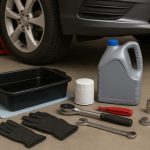The used car market has changed drastically in recent years, and one area that continues to grow rapidly is salvage auto auctions. Once a niche corner of the automotive industry reserved for dealers, rebuilders, and hardcore enthusiasts, salvage auctions are now attracting everyday buyers looking to save money, find project vehicles, or even build a side business flipping cars.
With the convenience of online platforms, increased inventory, and a growing demand for affordable vehicles, salvage auto auctions are booming in 2025. In this article, we’ll take a closer look at what’s driving this trend, how these auctions work, who’s buying, and what you need to know before getting involved.
What Are Salvage Auto Auctions?
Salvage auto auctions are auctions where damaged, totaled, or non-running vehicles are sold to the highest bidder. These cars usually come from insurance companies, fleet liquidations, rental companies, or even private sellers. Most have been declared a total loss by insurers due to damage, theft, or other issues that made repair costs exceed the car’s market value.
While the term “salvage” might sound like a red flag, many of these vehicles are still repairable. In fact, some are fully drivable and have damage that’s purely cosmetic. Others are better suited for parts or complete rebuilds. Salvage auctions are where these vehicles change hands — often at a steep discount.
Why Are Salvage Auctions Gaining Popularity?
The rise in popularity of salvage auto auctions isn’t just a coincidence. Several key factors are fueling their growth:
1. High Used Car Prices
Traditional used car prices have skyrocketed in recent years due to supply chain issues, increased demand, and limited new car production. For many buyers, salvage vehicles offer a way to get a car at a fraction of the cost.
2. Easy Online Access
Thanks to online platforms, salvage auctions are no longer limited to in-person events for licensed dealers. Now, anyone with internet access can browse listings, place bids, and arrange transportation — all from home.
3. Broader Vehicle Selection
Salvage auctions feature a massive variety of vehicles, from economy cars and trucks to motorcycles, luxury vehicles, and even supercars. The broad selection makes it easier for buyers to find exactly what they’re looking for, whether it’s a daily driver or a restoration project.
4. Rising DIY Culture
More people are interested in DIY repairs, flipping cars, or learning how to work on vehicles. Salvage auctions provide the perfect entry point for hands-on experience without a major financial risk.
5. Business Opportunities
Small-scale car flippers and independent mechanics are using salvage auctions to source inventory for resale. With the right knowledge and strategy, salvage vehicles can generate significant profit margins.
How Do Salvage Auto Auctions Work?
While every platform has its own process, most salvage auto auctions follow a similar model. Here’s a general breakdown of how they work:
Registration
Buyers must register with the auction platform, which may involve submitting identification and agreeing to terms of use. Some auctions require a deposit or a small fee to participate.
Browsing Inventory
Once registered, buyers can browse thousands of listings. Each vehicle includes photos, VIN details, damage reports, title status (such as salvage, rebuilt, or clean), and other relevant information.
Bidding or Buying
Some listings are auction-style, where buyers place bids and the highest offer wins. Others may include a “Buy Now” price for those who want to skip the bidding process. Bidding typically happens in real time with set start and end times.
Winning and Payment
If you win a bid or choose to buy now, you’ll receive an invoice. Payment usually must be made within a short time frame, often 1 to 3 business days.
Transport and Pickup
After payment, you’re responsible for arranging pickup or shipping. Many platforms partner with transport companies to simplify this process, especially for buyers purchasing from out of state or internationally.
Types of Vehicles You’ll Find
Salvage auctions offer a surprisingly wide range of vehicles. Here are some common categories:
● Collision-damaged vehicles with frame, body, or mechanical issues
● Flood-damaged cars affected by storms or hurricanes
● Hail-damaged vehicles with mostly cosmetic dents
● Theft recovery vehicles with missing parts but minimal physical damage
● Mechanical failures such as engine or transmission issues
● Fleet vehicles retired from rental or commercial service
● High-end and rare cars that may still be valuable despite damage
Who’s Buying From Salvage Auctions?
The growing buyer base for salvage auto auctions includes:
DIY Mechanics and Car Enthusiasts
People who love working on cars or are looking for a hands-on hobby enjoy salvage auctions for the potential to rebuild and restore vehicles themselves.
Small Business Owners
Independent repair shops, part resellers, and car flippers use salvage auctions to find low-cost inventory they can repair and sell.
Budget-Minded Drivers
Some buyers just need affordable transportation. For them, a lightly damaged salvage car with a little repair work can be the perfect solution.
Exporters
Vehicles with salvage titles in the U.S. are often shipped overseas, where they may be legally repaired and resold. This global interest helps keep demand high.
Pros of Salvage Auto Auctions
There are plenty of benefits to buying through salvage auctions, especially in today’s market:
● Significant cost savings compared to clean-title vehicles
● Massive inventory and variety across makes and models
● Access to specialty or rare vehicles not easily found elsewhere
● Great for learning, flipping, or long-term ownership
● Available online, often with buyer services included
Cons and Cautions
Of course, salvage auctions aren’t without their downsides. Here are some of the risks:
1. Vehicles Are Sold As-Is
There are no warranties or guarantees. What you see is what you get, and there’s always a risk of hidden damage.
2. Transport Costs
If the vehicle isn’t roadworthy, you’ll need to pay for towing or shipping — sometimes across long distances.
3. Title and Registration Hurdles
Salvage and rebuilt titles can make registration more complex, especially in states with strict DMV rules. Be sure you understand local requirements before purchasing.
4. Insurance Limitations
Insuring a salvage or rebuilt vehicle may be more difficult or expensive. Some insurers offer only liability coverage and may not provide full protection.
5. Need for Mechanical Knowledge
While some buyers are experienced, others may struggle to assess whether a damaged vehicle is a good deal or a potential money pit.
Tips for First-Time Buyers
If you’re new to salvage auctions, here are some tips to help you get started:
● Start small — Choose an inexpensive vehicle with minor damage
● Stick to models you know so you can better estimate repair costs
● Review all photos and documentation closely
● Avoid emotional bidding — set a budget and don’t go over it
● Check your state’s salvage title laws before buying
● Factor in fees and transport costs when calculating the total price
Final Thoughts
Salvage auto auctions have come a long way from being industry-only events. In 2025, they represent a dynamic, growing space where regular people — not just professionals — can find value, opportunity, and even fun.
Whether you’re looking for a car to fix up, flip, or drive, salvage auctions offer more inventory, lower prices, and easier access than ever before. But they do require homework, patience, and a willingness to accept some risk.
If you’re up for the challenge, salvage auctions might just be the key to finding your next vehicle at a fraction of the cost.
Lynn Martelli is an editor at Readability. She received her MFA in Creative Writing from Antioch University and has worked as an editor for over 10 years. Lynn has edited a wide variety of books, including fiction, non-fiction, memoirs, and more. In her free time, Lynn enjoys reading, writing, and spending time with her family and friends.















